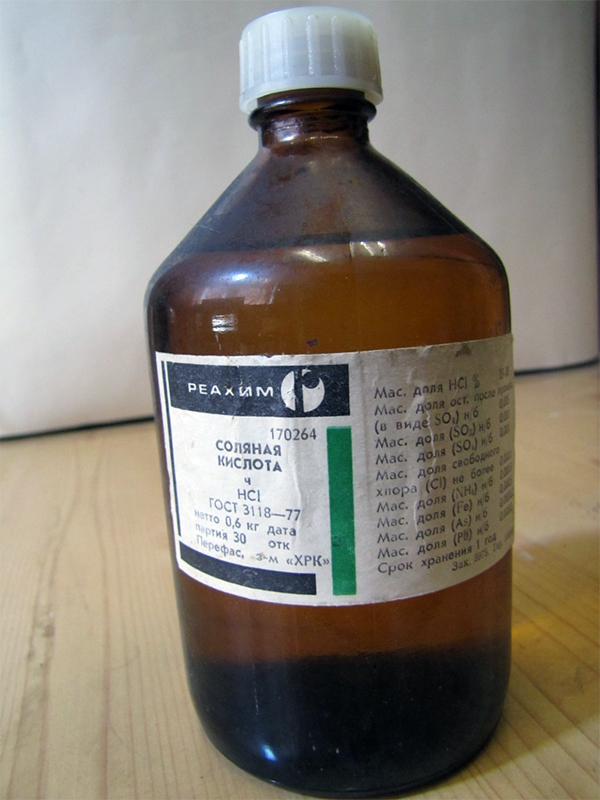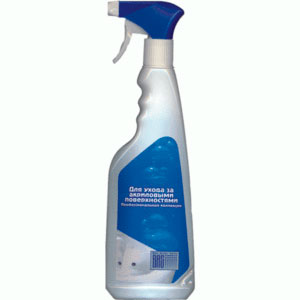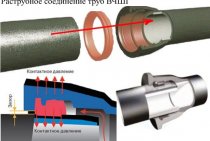Which bath cleaner to buy
1. One of the leading cleaners is Cif Crem. It is recognized by many users as the best all-round cleaner for many surfaces, including cast iron bathtubs. This product does an excellent job with various pollution and has a budget cost, so it can be advised to everyone.
2. Comet gel is recognized as an excellent cleaning agent suitable for the care of the surface of cast iron bathtubs. It will not only get rid of dirt, stains, plaque and rust, but also bacteria and germs. At the same time, it will return the original whiteness of the product and protect it from new contaminants.
3. Bass Gel is free of strong chemical acids, so it will be a great helper in the fight against stains, rust and plaque on your acrylic bathtub, tile or shower. This composition penetrates deep into the pollution, splitting them and removing them without residue.
4. Acrylic is suitable not only for owners of acrylic baths. It is able to clean almost any surface from stubborn dirt, while disinfecting them and removing mold and fungus. Convenient packaging in the form of a spray bottle allows you to choose two spray modes: liquid or foam.
5
If you have an enamel bath, then pay attention to Luxus Professional from Oricont. This product has an excellent highly concentrated composition that thoroughly removes various contaminants, restores shine to the product and does not damage the surface.
6. Adherents of household chemicals with a natural composition, we boldly recommend the Frosch cleaning agent with grape acid. Such a product is suitable for allergy sufferers, asthmatics, families with small children. It will perfectly cope with stains and limescale without damaging the enamel of the bath.
Friends will also be interested

Every woman dreams of a beautiful, cozy and clean home. But every day, housewives are faced with various everyday problems. Dirt, greasy stains on kitchen furniture and windows that appear after cooking, dust, hand marks on mirrors, soiled floors and carpets - these are daily troubles that you have to deal with. In addition, soap streaks and lime deposits in the bathroom, the smell in the bathrooms, and other contaminants significantly add to the hassle.
In such a situation, household chemicals come to the rescue. Manufacturers offer a huge selection of different products. Among them there are those that are designed for specific purposes: washing glasses, cleaning carpets, cleaning the bathroom. There are also universal ones that allow you to clean stoves, sinks, tiles and other surfaces. By choosing a product that meets all the necessary requirements, you can greatly facilitate and speed up the cleaning process.
We have compiled a list of the best cleaning products based on expert reviews and reviews from real customers. Our recommendations will help you make the best choice for your requirements and desires.
There are many competitors on the home goods market, but we have selected the best manufacturers and recommend paying special attention to them:
Rust removal methods
If, after washing, ugly brown marks are found on things, then questions immediately arise: how to remove rust stains on clothes, is it possible to wash it off without damaging the fabric? This is true for both white and colored products.
The modern chemical industry produces many bleaches and stain removers, and it seems that finding something to remove a rust stain is very easy. However, these tools are often unable to cope with such problems. All ready-made products contain bleach, and therefore they can only be used for white fabrics, and colored ones, after cleaning the dirt, can change the shade.

Most modern tools can remove rust only with fresh stains, but they do not work on old ones. But in any household, as a rule, there are various substances that will help remove rust from clothes at home.
Removing rust from white clothes
If white things are damaged, then the task becomes more complicated. Indeed, in addition to removing dirt on white clothes, care should be taken to ensure that the fabric itself does not lose color and does not turn yellow or gray. Before removing rust from white clothes, you should make sure that the following components are in the house and learn how to use them:
Lemon acid. It will help to remove traces of rust from white clothes. It is used in a solution with cold water (20 g per half a glass), which is poured into an enamel bowl and brought almost to a boil. The soiled tissue fragment is placed in the solution for 5 minutes, if necessary, the time can be increased, then it is better to rinse the item in running water.

Special chemicals. As a rule, these are household chemicals, with the help of which stains are also removed from white clothes made of cotton fabric. We moisten the rusty place with the agent, clean it and rub it until foam forms, rinse it under running clean water, then wash the clothes in the usual way.

Hydrochloric 2% acid. It is another method than to remove rust from white fabric. She needs to wet the rusty spot and wait until it turns pale. Then you should rinse the cleaned fragment of the product in a solution that is made by adding 3 tbsp. l. ammonia in 1 liter of water.
On the video: citric acid against rust stains.
How to wash colored clothes
Removing rust from colored clothes is much more difficult. many chemicals and solutions can affect dyes in fabric. There are several methods for removing rust from clothes of any color:
Glycerin and chalk. The solution to the problem of how to remove rust stains from colored clothes can be helped by using a thick mixture of glycerin and chalk (taken equally and mixed with water), the mixture must be applied to the rust mark on the fabric for the whole day, then washed.

A rusty stain is removed with a solution of acetic acid quite quickly. You need to add 5 tbsp. l. acid (optimally suitable essence) in 7 liters of warm water and immerse the soiled clothes in the solution for 12 hours. Then you can remove the stain from the clothes manually or by machine.

Vinegar and salt. This is another method to remove a rusty stain. These two ingredients are mixed until a homogeneous slurry is obtained, which is applied to rusty marks for half an hour, then the clothes should be washed.

Vinegar. It is possible to remove rust from the fabric on jeans using wine vinegar, which is diluted in water (1 tsp per 1 tbsp.). The stain is lubricated with this solution, then the jeans must be rinsed well in warm water.
Watering can and mixer
It is immediately worth noting the rules that it is desirable to follow when caring for chrome surfaces.
- Do not rub the elements with metal sponges, otherwise scratches will form.
- For the same reason, scouring powders are prohibited.
- No need to use hydrochloric, phosphoric and sulfuric acids: they provoke the appearance of dark spots.
The holes for the exit of the jets and the junction of parts quickly become overgrown with lime and force you to buy a new watering can. To avoid this, cleaning must be carried out on a regular basis.
The most effective method in the fight against deposits will be our favorite vinegar. Pour undiluted table acid into the bag and fix it on a watering can with a rubber band. Better to leave overnight. After the remnants of plaque should be removed with a brush, and the stuck particles should be picked out from the holes with a toothpick.
You can unscrew the nozzle from the hose and place it in a container of vinegar for 6-8 hours. Then it remains only to thoroughly rinse the part under pressure.
Also, the solution can be prepared from lemon: 25 g per 1 liter of hot water.
It makes sense to carry out internal cleaning no more than 1-2 times a year, because if you regularly remove the layer from the outside, it will accumulate more slowly.
In order to remove dirt from the mixer, time-tested techniques will do.
Laundry soap and soda
Help with fresh plaque. The recipe is the following:
- grate the soap and mix with water until the consistency of sour cream;
- add a little baking soda or soda ash;
- put the paste on a napkin and put it on the mixer;
- hold for 1 hour and wash off.
You can simply apply a slurry of soda to the tap and leave for about an hour.
baby oil
It removes not only small stone deposits, but also soap stains and greasy stains. With a cloth soaked in oil, you need to walk through all the soiled places. Then the oil needs to be washed off, and the tap polished with flannel or suede.
Vinegar and lemon
Any of these substances (pre-dissolve the lemon) should be wetted with a cloth and applied, like a compress, to chrome-plated appliances. It takes literally 15 minutes. To wash stubborn dirt, you can heat the mixture and increase the exposure time to 2 hours.
Do not forget to clean the aerator occasionally if you have one installed on the spout. To do this, the part must be removed, washed and soaked in vinegar overnight. Then the holes will have to be processed with a needle or a toothpick.
How to remove rust from colored clothes
Corrosive acids can finally and irrevocably spoil things, because they are able, together with rust, to "eat" the color and texture of the fibers. Therefore, for clothes made of colored, thin and delicate fabrics, more gentle means are used.
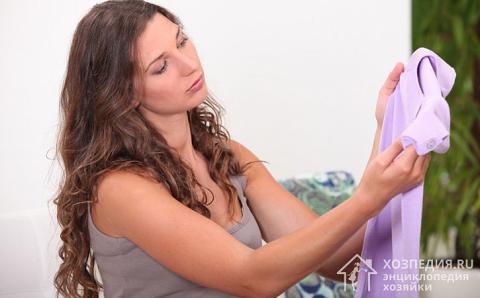
Glycerol. To remove rust from clothes made of colored fabrics, it is most often advised to use glycerin. It can be mixed with chalk powder or gel dishwashing detergent:
- Glycerin is mixed with chalk powder in a ratio of 1: 1 to the consistency of liquid sour cream. The resulting mixture is applied to rust spots and left for a day. Then the areas of stains are rinsed with water and the item is sent to the wash.
- With dish detergent, glycerin is diluted in a ratio of 2: 1, the mixture is lightly rubbed into the soiled areas of the fabric and left overnight. Then things are rinsed and washed as usual.
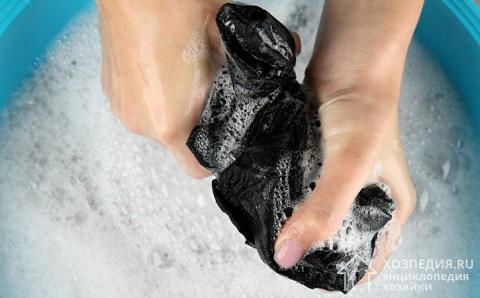
Removing rust from clothes is not an easy task! Sometimes you have to treat stains several times and experiment with different products. If you are afraid of ruining your favorite things, then it is better to immediately take them to a dry cleaner and entrust all the worries about stains to professionals.
Best Acrylic Bathtub Cleaners
The surface of acrylic bathtubs, as well as cast iron ones, is afraid of aggressive acids and especially coarse abrasives. An excellent tool for cleaning them is Bass gel, which is specially designed to care for this kind of product. It will be good both as a product for quick light cleaning, and for serious cleaning of old, stubborn stains, plaque. The fluid consistency is thick enough not to run off vertical surfaces too quickly. The composition works carefully, without damaging the top acrylic layer.
For a good result, the manufacturer advises to apply the product to the entire bath, distributing it with a soft sponge or napkin, and leave it to act for 15 minutes. After that, it is recommended to gently rub the surface, and then rinse with plenty of water. An additional applied polish for acrylic bathtubs will provide even greater durability. It will fix the result and give the product a radiant look. Bass is also suitable for showers.
Advantages:
- breaks down even stubborn dirt,
- thick consistency suitable for vertical surfaces,
- does not contain aggressive acids and coarse abrasives,
- does not damage the acrylic layer.
Flaws:
Acrylan
The next cleaner is Acrylan from Bagi. This product is a foam that carefully but gently removes not only dirt, limescale, rust and stubborn stains from the acrylic surface of the bath, but also microbes, as well as mold and fungus. Also suitable for glass, tiles, ceramics and enamel. At the end of the work, this composition forms a special film that does not allow dirt and plaque to accumulate for several days.
It is necessary to use Acrylan with protective gloves so as not to harm the delicate skin of the hands. After applying the product to the inner surface, leave it for a few minutes to act, then rinse thoroughly with water. The composition of the product includes citric acid and surfactants, which together have a cleaning and disinfecting effect. It is worth remembering that Acrylan should not be left to dry or mixed with other household chemicals.
Advantages:
- cleans all types of dirt,
- airy foam,
- does not scratch the acrylic layer,
- does not contain coarse abrasive components,
- speed and convenience of work,
- suitable for various surfaces,
- reasonable price per tube.
Flaws:
strong chemical smell.
Folk recipes for rust control
There are many more ways to solve the problem, how to get rid of rust on clothes. After all, in any household there are products or substances that will help:
Lemon. It is a good tool to help remove rust stains from clothes and not only (it can be used to remove stains on household appliances, plumbing and tiles). Lemon pulp (the peel must be removed) is wrapped in gauze and applied to the dirty stain so that the juice is well absorbed. Then it is treated with a hot iron. The procedure can be repeated 2-3 times until the rust is completely removed from the clothes.

Lemon juice without pulp. It will help remove rust from clothes from any fabric: it is squeezed out immediately before cleaning and applied to the stain, which should be covered with paper and ironed on top
In this case, the type of fabric should be taken into account: a delicate fabric can deteriorate from heating, so it is better to leave it for 15 minutes until the acid removes the stain, then the product must be rinsed

Toothpaste. It will also help remove rust from fabric. Ordinary paste must first be mixed with a little water. It is applied to a rusty stain with a thin layer, left for 40-50 minutes, then the fabric should be cleaned and the cleaned area rinsed.

Acetic and oxalic acids. The most time-consuming task will be how to remove a rust stain if it appeared a long time ago, because old pollution is very difficult to remove. To do this, mix 2 types of acid (acetic and oxalic) 5 g each and add to a glass of water. The solution is heated and the soiled fragment of the product is dipped into it for 3 hours, after which the item is usually washed in the machine.

Dishwashing liquid and glycerin. To solve the problem of how to remove rust from a thin fabric, you can use dish detergent mixed with glycerin. Such a tool is applied to dirty spots for a couple of hours, then the stain must be wiped off, the fabric is thoroughly rinsed in running water.

Special funds
Special chemicals can be called universal soldiers, since they are suitable for almost any pollution and guarantee a good result.
Purchased funds can be divided into three main categories.
- Alkaline - removes organic compounds, salts and rust and does not have a strong odor. These include Domestos, Cif. By the way, it is alkalis that are perfect for cleaning sewer pipes from grease and sticky film.
- Chlorine-containing - perfectly corrode dirt and disinfect. A significant disadvantage is a pungent odor that is difficult to remove.As an example, we can cite the well-known “Whiteness” or more modern EasyWork, “Santeks”.
- Acidic - removes the oldest and most difficult impurities, but can harm some materials. This is the largest group: Toilet Duck, Cillit, Sanoks, Chistin, Synergetic, Comet and others.
There is a wide range of cleaning powders (eg Pemolux or Comet), but these should only be used in extreme cases. They leave scratches, albeit not visible to the eye, but because of them, dirt will accumulate faster in these places. Not only the appearance is lost, but the service life of the device is also reduced.
For chrome elements at the final stage, it is also worth using a polish that will hide minor scratches and give the product a radiant shine: Sonax paste for chrome and aluminum, Doctor Wax, Runway.
When washing the shower cabin, you will need glass cleaner. It will remove stains from the glass walls. Frosch Glass Cleaner, Mister Muscle, Clin, CIF have proven themselves well.
If for some reason the products of the chemical industry do not suit you, then you can turn to proven home remedies.
Causes of pollution
The very first thing to figure out is what you have to fight. After all, dirt on plumbing can be of a different nature.
- Limescale (water stone) - the water in the pipeline is far from filtered, it contains a large amount of impurities and salts. Drops fall on the surface during use, then the moisture evaporates, and the sediment remains.
- Rust - its particles are also in the water, and gradually it settles on taps and appliances, forming ugly spots.
- Hygiene products - during water procedures we use soap, shampoo, shower gel. Naturally, they fall on the surrounding objects and form a soap layer.
- Urinary stone is the trouble of toilets, and often the owners themselves are to blame if they do not have the habit of flushing every time after going to the toilet. For example, some do not do this at night so as not to wake up the household. Gradually, mineral compounds are deposited on the walls, forming a strong layer and an ugly darkening.
Bath
The method of cleaning and bleaching the bathroom depends primarily on the material from which the font is made.
Cast iron and steel products have durable enamel, no aggressive components harm it. She is not afraid of powders either, although it is advisable to be more careful here, because gradually the enamel coating becomes thinner, roughness appears, and spots form faster.
Vinegar can be used to combat the white layer. Put rags soaked in the substance on the soiled areas for half an hour. After that, it remains only to wash off the exfoliated lime.
Ammonia will also help: dilute a small amount with water and apply for 10 minutes. Remove residues with hot water.
From folk recipes, you can try only diluted 1 to 10 vinegar. The solution should be applied to problem areas, and washed off after 12 hours.
You can also use oxygen bleach, which is poured into a bathtub full of water. You can calculate the amount of bleach as follows: multiply the portion indicated for washing by two. After a few hours, the liquid must be drained, and the font washed with a soft cloth.
Gel textures of specialized compositions are best suited for acrylic. Here is the case when it is undesirable to take risks and it is worth choosing purchased funds.
How does rust appear on clothes?
These reddish-brown stains can form in several cases:
- Very often, especially in winter, we hang clothes to dry on various metal structures. Basically, these are radiators. They are not always perfectly dyed, moreover, the paint can peel off over time. Rusty spots appear in places where wet cloth comes into contact with bare metal.
- Sometimes, before washing clothes in the washing machine, we forget to check all the pockets, and some metal things may remain in them: pins, jewelry, nuts, paper clips, coins, etc. They react with water and leave on the laundry ugly divorces.
- Often children from the yard come in clothes with rusty spots. Swings, slides, carousels, metal benches are installed on the playgrounds, the child rubs against them and gets dirty.
- On clothes, especially in recent seasons, there are a lot of rivets, buttons, decorative metal elements. From them, rust can go to the fabric.
shower cabin
Many replace the usual fonts with comfortable showers. This is understandable, since they take up less space and allow you to increase the useful area of \u200b\u200bthe bathroom.
However, caring for the cabin is not so simple: lime and soap accumulate on the bottom and walls, which are quite difficult to wash. If you neglect constant washing, then soon the inner surfaces will become covered with white stains, dark spots, and it will become very unpleasant to wash in the shower.
For weekly cleaning, it is better to follow the following sequence of actions:
- wash the walls and plastic parts from limescale, dirt and mold;
- remove all deposits from the glass doors, and then wipe them with glass cleaner to get rid of streaks;
- clean the faucet, shower head and other chrome elements;
- it remains only to wash the tray, taking into account the material (acrylic, enamel coating or others): a bathroom product is ideal for this.
Guess who will help in the fight for cleanliness? Yes, yes, the components we already know.
Prepare a solution of two parts water and one part vinegar and use a spray bottle to spray it over the cabin. After 15 minutes, it remains only to wash off the composition and walk with a brush.
Citric acid is also used according to the same principle: 100 g of powder per 0.5 l of warm water.
You can wash the glass doors of the booth to a shine with the help of ammonia. 1 st. l. substances must be diluted in 1 liter of water and wipe the glass with a cloth soaked in the mixture.
You can see the action of various methods in the video:
Features of removing rust stains from delicate fabrics
Delicate fabrics require special treatment. This also applies to removing stains from their surface. Rust from white clothes made of silk, knitwear and wool can be reduced as follows:
- Prepare a mixture of grated soap, glycerin and water (proportions 1:1:1), the consistency of the cleansing composition is a slurry of medium density.
- Spread the mixture over the stain and soak for 24 hours.
- Wash clothes by hand with the addition of any washing powder for white fabrics.
When washing white items from delicate fabrics in an automatic washing machine, bleaches with the addition of chlorine should not be used; it is better to choose oxygen-based or enzyme-based detergents.
Useful tips for removing rust stains
- Fresh stains are much easier to remove than old ones, so try to get rid of them as soon as they appear.
- When in contact with water, rust stains become even more resistant, so it is advisable to attempt to remove them before washing, so as not to aggravate the problem.
- If you remove traces of rust with acid preparations, be sure to protect your hands with rubber gloves so that the aggressive environment does not adversely affect the skin. Work must be carried out in a ventilated area.
- Before proceeding with the removal of rusty dirt from outerwear, it is necessary to first clean it from dust and dirt.
- Before using any of the above products, they must be tested on an inconspicuous area of \u200b\u200bthe clothing.
- Vinegar, lemon and other acid preparations are considered the best rust remedies. This is due to the fact that under the influence of an acidic environment, rust breaks down into components that dissolve without problems in water.
Which brand of bath cleaner to choose
There are many companies producing household chemicals. These are both foreign and domestic brands. All of them try to use only the most advanced technologies in their cleaning products. There are different price segments on our market, ranging from the cheapest to expensive professional preparations. Despite such a wide choice, it is quite difficult to decide which company to give preference to. The dominance of gels, powders, sprays and pastes confuses the consumer. Sellers, taking advantage of this confusion, try to sell what is profitable, but not always of high quality. We have selected some of the most popular and proven brands to make it easier for you to navigate.
To date, the following brands and firms have gained consumer confidence:
Some of these brands are not promoted and may seem unknown to most, thus causing concern. In fact, household chemicals, including cleaning products for plumbing, such brands have existed for a long time and are gaining more and more popularity among buyers every year. This is due to their high quality and performance.
Sink
This object “gets” more than the others: more than once a day, family members here brush their teeth and wash their hands (sometimes after very dirty work and activities), the dog’s paws are washed immediately after a walk, and children rinse their brushes after drawings with paints. In general, stains accumulate quickly.
The good thing is that sinks are usually made from earthenware or porcelain, and therefore the principle of cleaning them does not differ from toilet bowls and they are not afraid of chemicals, but you cannot rub them with metal brushes, otherwise the coating may be damaged. The recipes already described above with vinegar and soda, lemon are ideal. Only the exposure time should be reduced: 15–20 minutes is enough.
You can use natural lemon juice: rub the affected areas with half of the fruit. A nice citrus scent is a bonus. This method is also suitable for sinks made of artificial stone.
Severe dirt and deposits are removed with ammonia. Treat particularly soiled areas with ammonia, and then rinse. If you add hydrogen peroxide to it (50 ml of peroxide per 100 ml of ammonia), then this mixture will also get rid of rust.
Express methods for removing traces of fresh rust from a T-shirt or blouse
Every chemist knows that rust is afraid of contact with acid. So maybe we use a proven fact to clean a bathrobe, a T-shirt, a bra or some other thing at home? After all, there is always vinegar or citric acid in the household. They will become the main assistants in the struggle for the purity of things.
A fresh rust stain on a white blouse, t-shirt or other clothing can be removed in one of the following ways:
- ½ cup of water and 20 g of citric acid powder mix and heat (do not boil!). Pour on the stain and let the clothes soak a little. If the rust is fresh, then get rid of it very quickly. Literally in 5 minutes it will dissolve in an acidic environment.
- Citric acid can be replaced with a thin circle of fresh citrus, which is recommended to be wrapped in gauze during the procedure. The prepared lemon is placed on the stain to be removed, and carried out on top with a hot iron, laying several paper napkins under the clothes to absorb the juice that flows out. After removing the rust, white clothes should be washed in the usual "for dense fabric" mode or in the "delicate wash" mode - for silk, lace, synthetics and knitwear.
- You can bleach a thing with 70% acetic acid. Add 2 tbsp. spoons of this liquid in 250 ml of water and heat to +75 ° C. Place the area of fabric with a stain in the heated mixture for 4-5 minutes, then rinse it in water with the addition of ammonia - ½ tablespoon per 1 liter of water.
- An alternative to essence is 9% vinegar. Mix it with salt to the consistency of a thick porridge and generously spread it on a rusty stain. The holding time of the product is up to 30 minutes, after which the thing is washed by hand or machine.
- You can also remove rust from the most delicate tulle or knitted sweater with ordinary toothpaste. To do this, we generously lubricate the contaminated area with a hygienic agent and let it lie down for 25–30 minutes. After the time has passed, wash the clothes in the usual way.
The tips listed above are highly effective for fresh rust stains. However, old pollution will have to be removed by store means. In addition, dry cleaning services are available.
It is impossible to remove rust stains from light-colored things with chlorine bleaches, since when chlorine enters the structure of matter, pollution can be deeply "sealed" inside. And in the future, no methods will help solve the problem.
Ways to remove fresh stains
- The contaminated area must be soaked in a solution of equal measures of lemon juice and cold water. The fabric with the stain is immersed in the liquid composition for 30 minutes. If this was not enough, leave for another 15 minutes. To remove traces, dip this place in a liquid detergent without diluting it with water.
- Signs of corrosion on a white T-shirt are successfully removed by a slice of lemon. The acid of citrus corrodes rust as a result of the interaction. It is only necessary to check that the composition of the fabric is resistant to acid. Wipe the stain with a slice of lemon and sprinkle with salt. Place the product in the sun to dry.
- This recommendation also uses lemon. Wrap the slice with gauze and apply the pulp to the stain. Iron with a hot iron through the fabric. After treatment, wipe the traces with a cloth moistened with hydrogen peroxide.
- An effective remedy for saving white linen is toothpaste. It is thickly applied to the red print. Hold for an hour and wash. You can dilute the paste with a little water.
- Lemon and hydrogen peroxide are reliable allies against traces of metal corrosion on fabric. After treating the dirt on the jacket with lemon juice, you need to wipe it with peroxide and wash it in cool water.
- Fresh traces of rusty metal on colored and white fabrics can be removed with a mixture of glycerin and liquid soap in a 1: 1 ratio. Add a few drops of water and treat the stain.
Conclusion
To avoid deposits and ingrained dirt, it is best to wipe the plumbing with a dry cloth after each use. But let's be honest: in most cases, there is neither the strength nor the time for this. And to teach such an action to a husband and children is a completely failed undertaking.
It remains only not to start the state of the devices and carry out processing at least once a week. Then the pollution will not have time to grow old, and it will not be difficult to remove them.
How often do you clean plumbing and what methods do you use?
The bathroom is one of those places where we spend a lot of time. This room is quite problematic in terms of maintenance, since the humid environment is an excellent breeding ground for various pathogenic microorganisms. Often we do not pay due attention to cleaning plumbing, using the first household chemicals that came across in the store. And we hardly ever think about whether the product we bought is suitable for the type of coating that we have. In our selection, we decided to introduce you to the best products for cleaning bathtubs and other surfaces.
